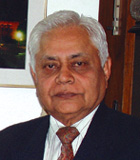INDIAN ARMED FORCES CHIEFS ON
OUR RELENTLESS AND FOCUSED PUBLISHING EFFORTS

SP Guide Publications puts forth a well compiled articulation of issues, pursuits and accomplishments of the Indian Army, over the years

I am confident that SP Guide Publications would continue to inform, inspire and influence.

My compliments to SP Guide Publications for informative and credible reportage on contemporary aerospace issues over the past six decades.
- Prime Minister witnesses 'Bharat Shakti' – a Tri-Services Firing and Manoeuvre Exercise in Pokhran, Rajasthan
- Interim Defence Budget 2024-25 — An Analysis
- Union Defence budget 2024
- Prime Minister Modi Commemorates Indian Navy Day in a Grand Ceremony
- Prime Minister Modi Flies in the LCA Tejas
- New Chapter in India-Italy Defence Ties
- Airpower beyond Boundaries
Recipe for success

Unless the Indian aerospace and defence industry has access to the global market, the prospects of success of ‘Make in India’ campaign is likely to remain plagued by uncertainty
‘Make in India’, the latest mantra for the Indian defence industry, was launched personally by Prime Minister Narendra Modi on September 25, 2014, four months after the NDA Government came to power. This was the first and important step in the fulfilment of the promises made in this regard by the Bharatiya Janata Party (BJP) during the election campaign. The broader aim of the ‘Make in India’ campaign is to kick-start India’s overly lax manufacturing segment especially in the Indian aerospace and defence industry and thereby to rejuvenate the confidence of investors.
India has one of the largest armed forces in the world and around 70 per cent of the requirement of military hardware is met with through acquisition from abroad; the remaining 30 per cent being produced by the Indian aerospace and defence industry in the public sector which dominates the scene. Import of defence equipment consumes over 40 per cent of the annual budgetary allocation for the Ministry of Defence (MoD). As a multibilliondollar market for military hardware, India is an extremely attractive market for the global aerospace and defence majors. The new thrust for ‘Make in India’ is expected to open up fresh avenues for manufacturing in this sector.

Over the years, India has acquired the dubious distinction of being the largest importer of military hardware in the world, a status that Prime Minister Modi is determined to change. For a nation aspiring to be a regional power, it would be necessary to develop an indigenous capability to manufacture most if not all the equipment required by the three services as also the paramilitary forces. Besides, it is also of importance that the indigenous military industrial complex must be internationally competitive.
Quite understandably, there will be impediments in the ‘Make in India’ campaign of the Modi-led NDA Government; but steps have been underway since the beginning of the last decade to introduce the necessary reforms. And now there is fresh impetus in this direction. Participation up to 100 per cent by the Indian private sector in the defence industry was permitted for the first time in the year 2001. Thereafter, the MoD introduced the Defence Procurement Procedure (DPP) in 2002 to define and regulate the process of procurement of military hardware from abroad and restricted foreign direct investment (FDI) to 26 per cent. This, however, was later revised to 49 per cent. The DPP has been refined periodically with the aim of making it more business-friendly and the latest version, DPP 2016 that was released during the Defexpo 2016 held in March this year in Goa has generated a fresh surge of hope.
There are also ongoing efforts by the government to make radical changes in the archaic rules and regulations for the defence industry as also the laws pertaining to imports, exports and taxation to make it easier for entrepreneurs to do business in India. The proposal to raise the cap on FDI beyond 49 per cent possibly to 74 per cent or even up to 100 per cent is currently under active consideration at the MoD. This has been a major issue with foreign investors as with FDI at 49 per cent, they have no control over their investments. For obvious reasons, the MoD is hesitant to allow control to pass into the hands of investors from abroad. But the related issue is that no foreign original equipment manufacturer will transfer sensitive and modern technology unless he can exercise control over his investments in India. Without transfer of technology, the indigenous industry may not be able to grow beyond its present level of capability.
A major limiting factor for the Indian aerospace and defence industry is the low volume of domestic demand which does not provide for economy of scale, a fundamental consideration for any industrial venture. Besides, as military platforms are subject to periodic replacement with new generation equipment, infusion of fresh investments in the infrastructure would be required with matching frequency. This issue could be a major impediment to the ‘Make in India’ campaign. The requirement therefore would be to find ways scale up demand to obtain maximum return on investment and make the venture profitable to survive. Therefore, unless the Indian aerospace and defence industry has access to the global market to enhance the volume of demand substantially, the prospects of success of the ‘Make in India’ campaign is likely to remain plagued by uncertainty.





